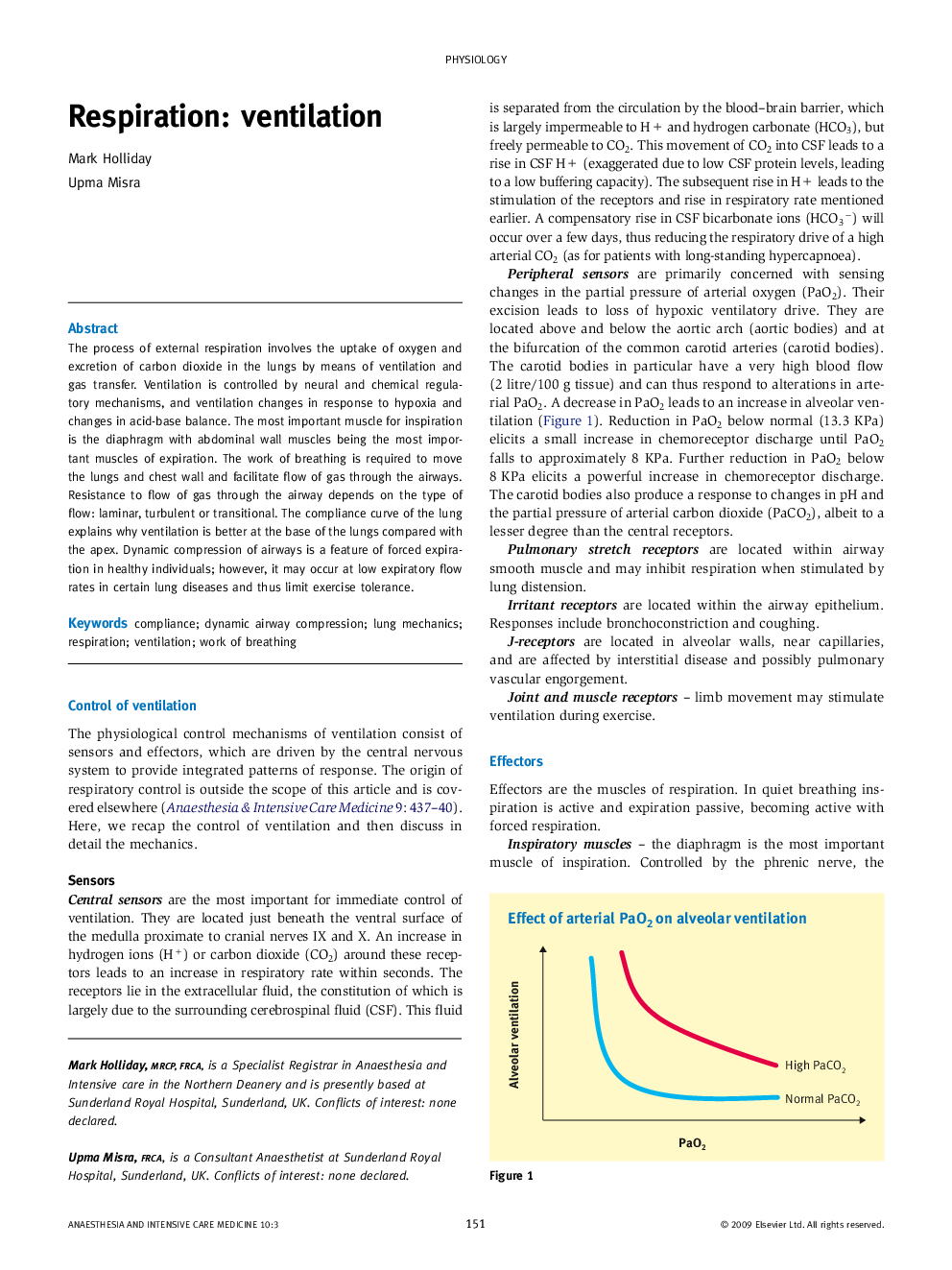| Article ID | Journal | Published Year | Pages | File Type |
|---|---|---|---|---|
| 2743269 | Anaesthesia & Intensive Care Medicine | 2009 | 4 Pages |
The process of external respiration involves the uptake of oxygen and excretion of carbon dioxide in the lungs by means of ventilation and gas transfer. Ventilation is controlled by neural and chemical regulatory mechanisms, and ventilation changes in response to hypoxia and changes in acid-base balance. The most important muscle for inspiration is the diaphragm with abdominal wall muscles being the most important muscles of expiration. The work of breathing is required to move the lungs and chest wall and facilitate flow of gas through the airways. Resistance to flow of gas through the airway depends on the type of flow: laminar, turbulent or transitional. The compliance curve of the lung explains why ventilation is better at the base of the lungs compared with the apex. Dynamic compression of airways is a feature of forced expiration in healthy individuals; however, it may occur at low expiratory flow rates in certain lung diseases and thus limit exercise tolerance.
